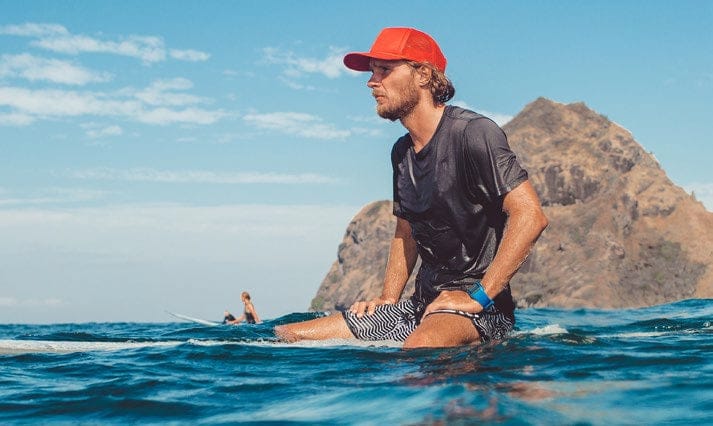How to Paddle Out
Share

When people think of surfing, they often envision a cruisy beach scene where everyone is hanging loose, sharing waves, and getting along great. The reality, however, is that waves are scarce resources, and are often competed over fiercely—especially in crowded areas. Tempers can flare, especially when someone “steals” someone else’s wave, or gets in the way and ruins a ride. To help avoid this uncomfortable situation, it is good to understand how a wave breaks and to paddle out in the safest and most efficient way possible.
There are three basic types of waves—point breaks, beach breaks, and reefs. Point breaks are typically long and user-friendly, and for that reason, they are often quite crowded. They can also have strong currents. Many people like to paddle out near to the peak in order to cheat the current, rather than trying to paddle out from the shoulder of the wave and battling the current to the takeoff zone. However, if you are not an experienced waterman, this can get you into a bit of a pickle, especially if you end up in the impact zone and underneath of someone, ruining their ride. In general, when surfing a point break, unless you are an expert, try to paddle out from the shoulder unless the current is too strong to paddle against. Always paddle wide to avoid getting in surfers’ way, and to avoid making waves on the head.
Reef breaks differ in that they are shorter, with a more compact takeoff zone. They also often break into a channel or pass, which makes them a bit easier to paddle out to. However, they can be the most powerful type of waves, so it’s important to know your limits before you paddle out. In general, you will want to paddle out through the channel or keyhole, then slowly work your way into the lineup. It is not appropriate to paddle past the crowd that is already waiting for waves and assuming pole position in the lineup. There is typically a hierarchy in the lineup, based on experience, ability, whether or not you are a local, and how long you have been waiting for a wave. Although localisms and violence is never appropriate, it is also inappropriate to paddle straight to the front of the line. This is really no different than dropping in on someone or “snaking” them, and the fact is, if you paddle out and sit on the crowd aggressively, you very well might get snaked yourself.
When paddling in from a reef break, it is important to remember that the water being pushed over the reef by the wave has to come back out to the ocean—and it does so through the channel. That means that there will normally be a rip pulling out to sea in the channel, which is great when you are paddling out, but not so great when you are trying to paddle back to shore. The best way to get back to shore is to catch a wave or allow a wave to push you in. Many people have panicked and gotten into trouble because they didn’t want to take a big wave on the head, so they tried to paddle against the rip in the channel but found themselves sucked out to sea.
Beach breaks are similar to reefs in that they are typically shorter waves, and ideally will break into “channels.” However, beach breaks tend to be less organized, with the waves breaking in different places and the rips moving around a bit. There is also often a lot of current moving parallel to the beach in beach breaks, which can help to regulate the crowd, but also make it difficult for you to stay in position. As with reef breaks, when surfing a beach, try to find the rip or channel and paddle out there. You may find that you have to paddle for a long time and take a lot of waves on the head when paddling out—that’s par for the course when it comes to beach breaks. But by familiarizing yourself with the ocean and gaining experience, you will soon become a stronger paddler and learn to recognize rips more easily.
Paddling in from a beach break is similar to a reef in that the channels will have rips pulling out to sea. In general, you will want to get pushed into shore by a wave to end your session.
When surfing a new wave, try to watch what the locals do and learn from them. Come with a good attitude, don’t drop in on anyone or paddle past the lineup and sit deepest, and try to respect the pecking order. In time, you will work your way up the ladder yourself!
MORE TO READ...
👉Get To Know The New FCS II Fins
👉Getting to Know Daniel “Tomo” Thomson
👉An Introduction to Billy Tolhurst
